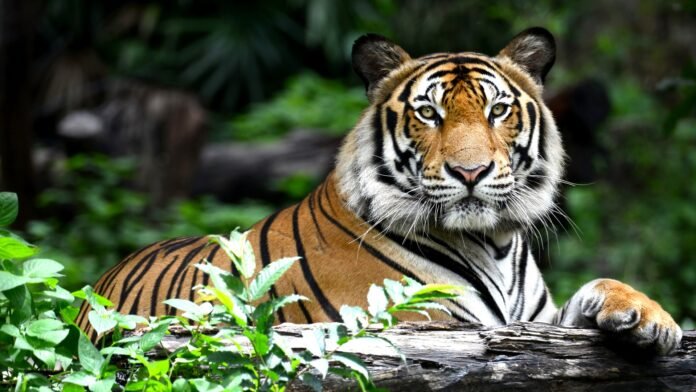Winter brings a unique charm to Ranthambore National Park, making it an ideal time for nature enthusiasts and wildlife lovers to explore this remarkable sanctuary. The cooler temperatures not only make the climate pleasant for visitors but also encourage Ranthambore’s wildlife to be more active during daylight hours. Situated in the heart of Rajasthan, Ranthambore offers an experience that combines adventure, relaxation, and breathtaking landscapes. This guide covers everything you need to know to make the most of your winter safari, including essential tips and insights on wildlife encounters you can expect during the colder months.
Ranthambore National Park is one of the most revered wildlife reserves in India, primarily known for its significant population of Bengal tigers. The park’s lush, varied topography—from dense forests to expansive grasslands—provides a perfect habitat for diverse species of flora and fauna. The winter season, from November to February, is a particularly favorable time to visit, as wildlife sightings are often more frequent and the natural beauty of the park reaches its peak.
1. Why Choose Winter for a Ranthambore Safari?
Winter in Ranthambore transforms the landscape, making it both picturesque and conducive for spotting animals. As the temperatures dip, the chances of observing tigers in action increase, as they tend to bask in the sun near water sources during the day. Unlike the warmer months, when animals are often hidden in the shade, winter allows for clearer, more frequent sightings. Visitors often report seeing not just tigers, but also leopards, sloth bears, Indian gazelles, and a wide variety of bird species, making winter safaris particularly rewarding.
Another advantage of winter safaris is the comfortable weather. The early morning and late afternoon safaris can get quite chilly, but the crisp air and misty mornings add a sense of mystery and excitement to the experience. For those seeking a memorable wildlife adventure combined with comfort, staying at a Luxury Resort in Ranthambore can enhance your overall experience, offering a mix of relaxation and proximity to nature.
2. Types of Safari Options Available
Ranthambore National Park offers two primary types of safari experiences: Jeep Safaris and Canter Safaris.
- Jeep Safari in Ranthambore: This option, with smaller, more maneuverable vehicles, is often preferred by serious wildlife enthusiasts and photographers due to its agility and the personalized feel it offers. A Jeep Safari in Ranthambore allows visitors to explore less accessible areas of the park and increases the chances of an up-close wildlife encounter.
- Canter Safari: Ideal for larger groups, the canter is a shared, open-air vehicle that accommodates up to 20 people. It provides a communal safari experience, allowing groups of friends or families to explore the park together. While it might not offer the same level of maneuverability as a jeep, it still offers excellent opportunities to observe Ranthambore’s majestic wildlife.
Each safari type has its advantages, and the choice largely depends on the type of experience you seek. For those wanting more privacy or a focused approach to wildlife viewing, the Jeep Safari is highly recommended. However, canter safaris offer a wonderful way to experience the park’s ambiance in the company of fellow nature enthusiasts.
3. What Wildlife to Expect in Winter
Winter in Ranthambore is a time when the park’s ecosystem flourishes. The park’s rich biodiversity means there’s a high probability of seeing a variety of wildlife species during a safari.
- Bengal Tigers: As the main attraction, tigers are most commonly sighted near water sources in the winter, warming up in the sun. Their majestic appearance against the dry, golden grasslands and lush greenery is truly mesmerizing.
- Leopards: Known for their elusive nature, leopards can sometimes be spotted along the hilly terrain and rocky outcrops. They tend to move more openly during winter mornings, making this an ideal season for sighting.
- Birdlife: Ranthambore is a paradise for birdwatchers, especially during winter, as it attracts a plethora of migratory species, including the Siberian rubythroat, painted stork, and greater flamingo. Resident birds like the Indian peafowl, crested serpent eagle, and parakeets are also frequently seen.
- Sloth Bears and Other Mammals: While sloth bears are harder to spot, they’re often seen during winter mornings scavenging for food. Other mammals like wild boars, sambar deer, and Indian gazelles are abundant and add to the thrill of the safari experience.
4. Essential Tips for a Winter Safari in Ranthambore
Making the most of your winter safari requires a bit of planning. Here are some valuable tips:
- Book Early: Winter is a peak season for safaris in Ranthambore. To ensure you get the best safari slots and accommodation, book your safari well in advance. Opting for the best resort in Ranthambore ensures not only a comfortable stay but also proximity to the park and knowledgeable guides who can enhance your safari experience.
- Dress in Layers: Early mornings in Ranthambore can be quite cold, with temperatures dropping significantly. Wearing layers allows you to stay warm during chilly hours and shed clothing as temperatures rise during the day.
- Pack Binoculars and Camera: While the park provides ample opportunities for close encounters, having a good pair of binoculars can help you observe wildlife from a distance. For photographers, winter offers the advantage of softer lighting and vibrant landscapes, making it an excellent time to capture stunning wildlife photographs.
- Listen to Your Guide: Safari guides are well-versed in the park’s ecosystem and animal behavior. Following their instructions not only ensures safety but also increases the likelihood of meaningful sightings.



